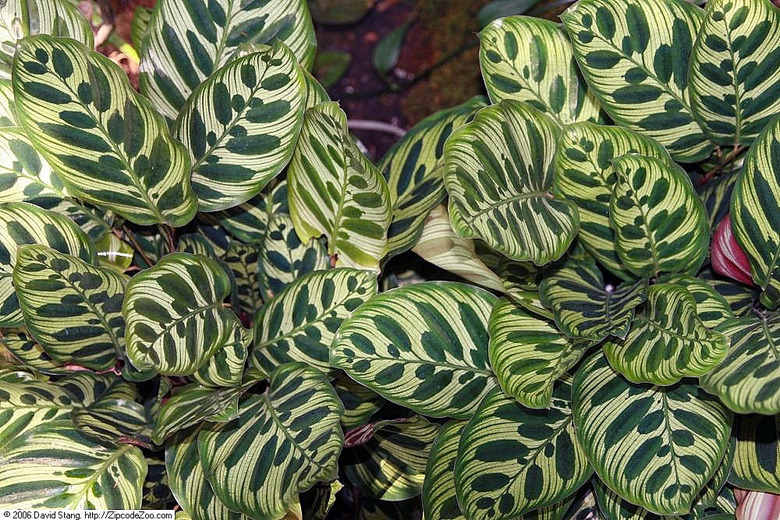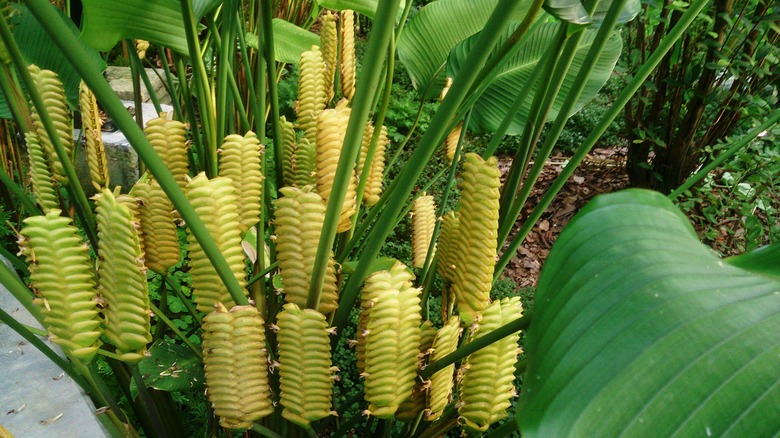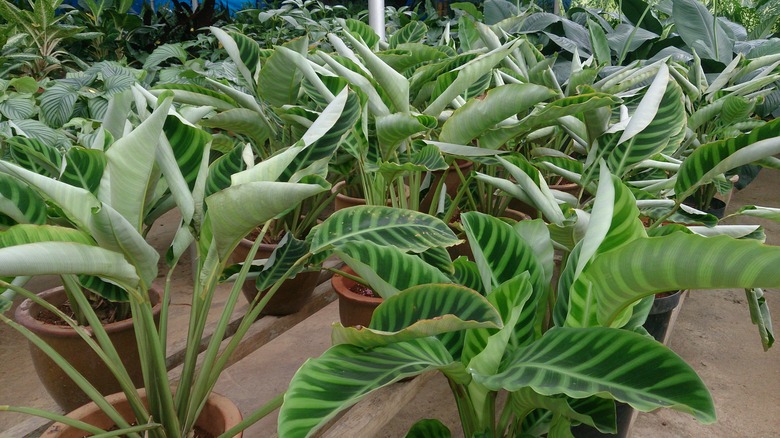Calathea Plant Care
The Calathea genus comprises multiple species, all valued for their foliage, which is dramatically colored, often in purples and reds or variegated greens and whites. Calathea plants are tropical plants that don't tolerate cold temperatures, however, so they are usually grown as houseplants.
Among the most popular varieties of calatheas are peacock plant (Calathea makoyana), zebra plant (Calathea zebrina) and rattlesnake plant (Calathea crotalifera).
About Calathea Plants
Calathea, which can grow outside only in USDA zones 11 to 12, is native to Brazil, where it grows in the rainforest, an environment that provides the conditions it loves the best: moisture and partial shade. This makes it a challenge to grow indoors as a houseplant, because it requires consistent moisture and a temperature between 65 and 70°F.
This plant spreads and propagates via underground rhizomes, and if you live in a climate conducive to landscape planting—Hawaii comes to mind, and it is common there—it will spread and could invade other parts of your garden.
Several varieties of calathea are typically available in nurseries and are common houseplants in the U.S.:
- Peacock plant (Calathea makoyana): This plant features variegated leaves of white, green and pink with dark purple undersides. Its stems are maroon, and it may grow from 2 to 4 feet high and wide, although it is smaller when grown as a houseplant.
- Zebra plant (Calathea zebrina): As its name suggests, this variety has rounded, deep-green leaves marked with pink or cream-colored stripes. It is similar in size to the peacock plant, reaching 2 to 4 feet tall and wide.
- Rattlesnake plant (Calathea crotalifera): Also called prayer plant or maranta, this variety produces showy yellow flowers that resemble a baby rattle and are up to 10 inches long. Botanically, it is also called Calathea lancifolia.
Calathea Care as an Indoor Plant
Calathea must have well-draining soil, so choose a container with drainage holes and fill it with peat-heavy potting soil. Find a location out of direct sunlight, although some early morning sun is tolerable. Bright indirect light is perfect.
Moisture and Fertilizer Requirements
In addition to diffused light, ensure that the humidity remains high. If your room has other plants that require high humidity levels, a humidifier could be useful. If you don't want the rest of the room affected, place the pot in a tray with wet pebbles.
Mist the foliage regularly and, during the typical growing season of April to August, water on a schedule that ensures the soil never dries out.
Apply a balanced fertilizer meant for houseplants once a month. In winter, reduce irrigation and fertilizer to give the plant a chance to rest.
Pests and Disease
Calathea is not generally targeted by diseases or insects, but any plant growing in a container indoors can be susceptible to aphids, scale, mealybugs and spider mites.
Ensure proper humidity and light. A lack of humidity can cause the leaves to curl up and brown at the tips, while direct sun can scorch the leaves. If this occurs, prune off the damaged leaves.


